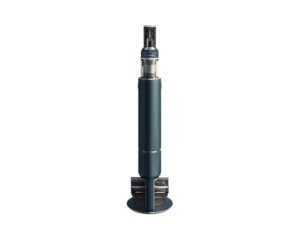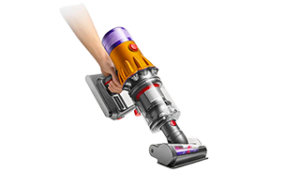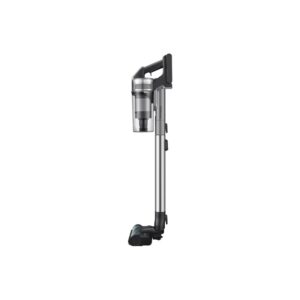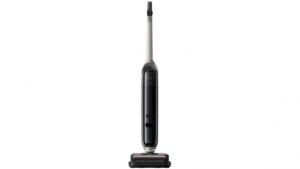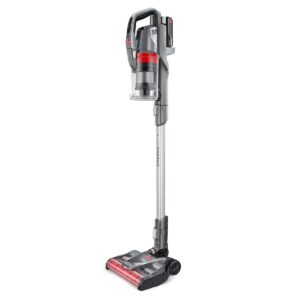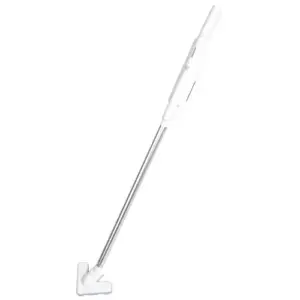Choo choo!
Tineco Floor One S7 Steam review: Full steam ahead
Home appliances like stick vacuums, and steam mops are designed to make it easier to keep your house clean but many of them require you to use that saved effort to clean them instead. Tineco’s Floor One S7 Steam offers the best of both worlds with simplified steam cleaning of both your floors and the device itself.

Tineco Floor One S7 Steam: Performance
A three in one device, the S7 Steam vacuums, mops, and steam cleans at temperatures up to 140℃, but you won’t want this to replace your usual stick vacuum. While it does have a filter that captures solid debris there is no separate bin, so the wet and dry mess gets tangled up in the dirty water canister. For spot cleans this system doesn’t present an issue, but doing a deep vacuum would be problematic. This is very much a secondary device designed to replace your mop and bucket, and even your scrubbing brush.
The steam function, especially on Boost Steam mode is hugely effective. I have disgusting linoleum floors in my kitchen, they hold on to grime and dust, and over time we developed what can only be described as a garden path through it. The sides of the path were stained with a clear walkway through the middle. I say ‘were’ because the S7 Steam did what the Mach V1 Ultra couldn’t, and actually removed those stains. It took about seven minutes on Boost mode, inching the device along, but the caked in dust and residue lifted.

LINOLEUM FLOOR: BEFORE BOOST STEAM MODE

LINOLEUM FLOOR: AFTER BOOST STEAM MODE
All up these seven minutes in heaven burned through 25% of the device’s battery life, as opposed to the 16-17% the same time spent on Auto mode. Rated to 40 minutes, the S7 Steam tracks to just over that in Auto mode. This is pretty standard for most stick vacuums and steam mops, and should be enough time to clean all your hard floors. You’ll need to be more concerned with running out of water, but more on that later.
In addition to saving battery, Auto mode utilises Tineco’s iLoop technology that adjusts suction, water flow, and roller speed depending on the debris. The LED display mirrors the device’s changes, lighting up red when debris is found and blue when it is cleared again. During Auto mode testing I pitted the S7 Steam against maple syrup, dry oatmeal, and wet oatmeal - the LED display only switched to red when I went across the maple syrup. An excellent salute to the great nation of Canada, but not so much for the sensor’s capabilities. Regardless of how it lit up, the mop handled each mess in a single pass, which is impressive no matter how you look at it.
Back at the charging station you can initiate the self-cleaning procedure by simply pressing a button at the top of the handle. Over the next two minutes the S7 Steam saturates and spins the roller brush, does the same with steam, and then uses suction and fast spinning to air dry the microfibre roller. All up this gets the mop head around 98% dry but visibly cleaner than it was before the cleaning cycle.
Tineco Floor One S7 Steam: Design
Aesthetically the S7 Steam does the trick, and from a UX perspective its design is simple enough to negate the need for a user manual, there is just the issue of the weight distribution.
Weighing in at 4.89kg without the additional 720g from a full water tank, the device is quite heavy for a handheld. Most of this weight sits in the mop head itself making the whole appliance bottom heavy. While that is great for standing stability, when you’re pushing it around it becomes unwieldy and difficult to manoeuvre. Pushing over 5kg across a slick surface builds up momentum faster than you’d expect which led the S7 to slam into walls more often than I’d like.
Tineco calls this “self-propulsion” and pitches it as a way to clean surfaces effortlessly without fatigue. I’d wager that this self-propulsion is really just inertia. While it is easy enough to keep the mop headed in one direction if you need to pull it back, or turn a corner - as you are likely to do while cleaning - you have to fight against it. It would be a better user experience if the weight was balanced better, similar to what Dyson implemented in its new WashG1. In Dyson’s version much of the weight is held closer to the top of the device which makes it feel lighter even though it is in fact heavier than the Tineco.
While weight is obviously a factor here it still would have been better to see a larger clean water canister. The 720ml bin lasted me long enough to do the kitchen and bathroom and one wash cycle. For me this is a relatively small area of floor, approximately 10m2 all up, but for people with larger areas of hard flooring I could see the water capacity becoming an issue. My bet is that the smaller capacity helps to lighten up the floor cleaner in operation. With the 720ml tank you’re already looking at 5.61kg and a litre would push that closer to 6kg.
How much does the Tineco One S7 Steam floor cleaner cost in Australia?
Retailing for $1,119 the Tineco One S7 Steam floor cleaner is only available from JB Hifi in Australia. You might get lucky and be able to grab one from eBay, but for the most part JB will be your best bet.
Prices are accurate as of the publish date. We may earn money if you purchase something through one of these links.
Is the Tineco S7 One Steam mop worth it?
Even without a fully accurate LED indicator system, the Tineco S7 Steam mop has the best performance we’ve seen in a steam mop. Its cleaning capabilities flow between cleaning surfaces and cleaning itself with equal ease. While it could benefit from better weight distribution and a larger clean water canister it is easily one of the best, and well thought out wet floor cleaners available on the market.
Stick vacuum cleaners compared
Related Articles













